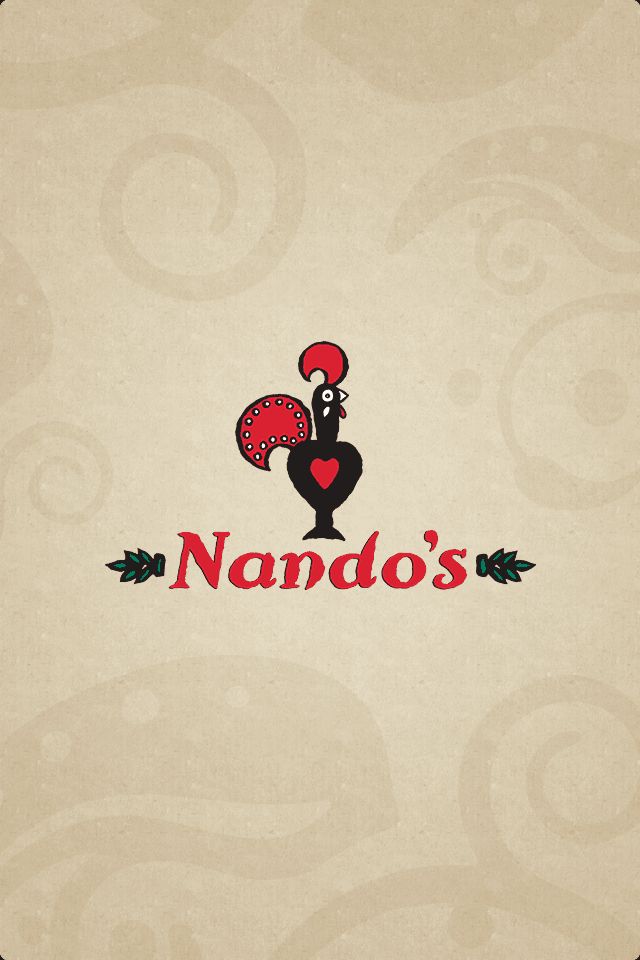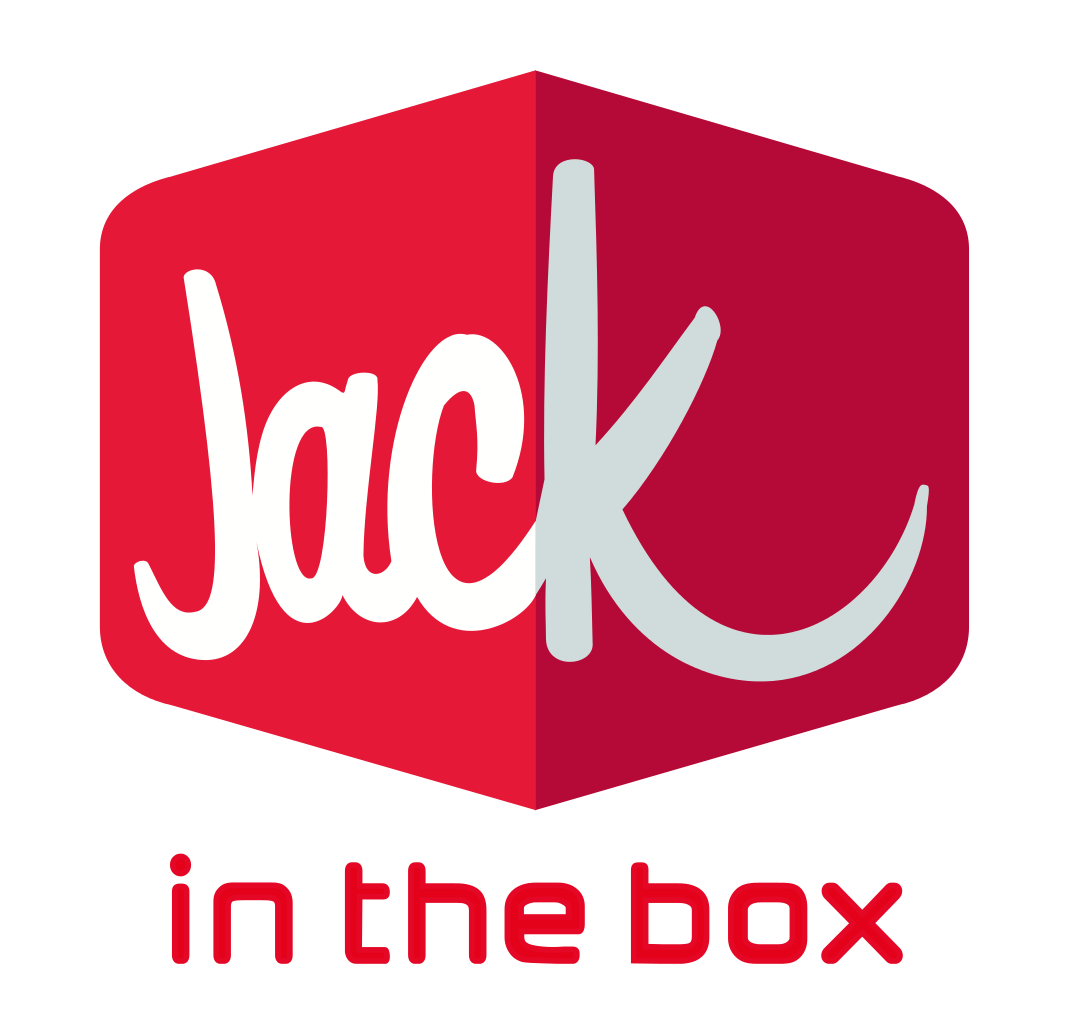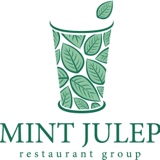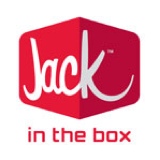Information
-
Document No.
-
Audit Title
-
Client / Site
-
Conducted on
-
Prepared by
-
Location
High-Impact Restaurant Visits are a Multi-Unit Leader’s (MUL) primary responsibility. They require thoughtful pre-planning, careful execution and thorough de-briefing with the unit GM afterwards to generate sustainable results. KEY: you are visiting people, not “stores.” Despite what many MUL’s have been taught, unit visits are not about “inspection”, “direction”, or “correction”, they’re about coaching, collabo- ration and development. Acting like an “inspector” instead of a coach stifles people, performance and profits.
-
High Impact Store Visits involve 7 distinct stages:
1. Review your Quarterly Business Plan and current progress on goals and objectives. Review your top 3 concerns and the GM’s top 3 concerns,
noting overlap, if any.
2. KRA Analysis: review the unit rank, period trends from last year, Key Result Areas progress and goal
vs. actual for each store.
3. Determine visit focus and inform the GM of your visit (unless visit is purposefully unan- nounced).
4. Conduct outdoor facilities and systems “walkabout” first without—and then with—the
GM or managers.
5. Conduct indoor facilities, people and sys- tems “walkabout” first alone then with GM or managers.
6.Meet with GM or managers after the visit to review, assess and help coach them to the next developmental level 7. Assess the visit and determine ways to make it more effective next time. Always leave the restaurant better than your found it.
7. Call each unit daily, visit every restaurant weekly, have a clear goal and focus, and help the team develop and grow. A MULs goals during visits are to help managers think, improve Manager skills as customer-centric coaches and leaders, and making certain that the team is doing the right things and the right things right.
Per-Visit Planning
What to do Before the Visit - The key to high impact visits is preparation. The written Quarterly Business Plan (QBP), along with daily/weekly financial reports and your daily phone calls to each unit should give you clear insight into which units need your attention first.
-
Review the written evaluation and the results of your last visit.
-
What was covered then? <br>
-
What were the managers supposed to be working on in the meantime?
-
Were there any outstanding issues?
-
What has changed in the unit since the last visit?
Assess how the unit currently ranks performance-wise in your territory
-
Sales
-
Budget
-
Labor
-
Food Cost
-
Curb Ave Time
-
DT Ave Time
-
GYR Score<br>
-
Guest Satisfaction Score<br>
-
Overall Unit Rank among all Units
-
Spectacular success is always proceeded by unspectacular preparation
Assess Trailing 12 month financial and performance trends. Compare actual achievement versus goals and past performance for the unit you are visiting. Note key changes and trends and consider underlying causes review with manager
-
Sales
-
Budget
-
Critical Late Tickets – Review last critical late ticket report with partner
-
Mystery Shops (90 Days)<br>Failing Standard= 88.00% Minimum / Under Performance=88.01-92.00% / Great Performance=92.01% plus
-
FanTrak (90 Days)<br>Failing Standard= 71% or Less / Under Performance=72-76% / Great Performance=77% plus
-
Complaints (Qtr)(Complaints/(Sales/100,000)<br>Failing Standard= 3.0 per 100k / Under Performance=3.0 to 1.87 / Great Performance=1.86 or less
-
Food Safety Audit (Last Round)<br>Failing Standard=79.9% or Less / Under Performance=80.0-90.0% / Great Performance=90.01% plus
-
Crew Staffing (Monthly)<br>Failing Standard= 90.0 or less% / Under Performance=90-100% / Great Performance=100.01% plus
-
Management Staffing (Monthly) Failing Standard= Short 1 Co or 2 AM / Under Performance=Short a AM / Great Performance=100% plus( all pos filled)
-
Ideal Labor (YTD) Failing Standard= Above Current Goal / Under Performance= Current Goal to -0.5% / Great Performance= -0.51% or more under current goals
-
Ideal Food Cost (YTD) Failing Standard= 1.5% (+ or -) / Minimum Under Performance= 1.5% - 0.51% (+ or -) / Great Performance= 0.5 (+ or -)
Consider market place trends and events- What are the external factors that are affecting this unit? How can your team prepare or respond in order to maintain and drive their business?
-
Infrastructure (parking issues, construction, road closures, etc.)
-
Competitors (new restaurants, competitive promotions or LTO’s, etc.)
-
Seasonality (weather, holidays, vacation/tourism school calendars, etc.)
-
Special Events (festivals, sports, parades, movie releases, etc.)
-
Others
-
Restaurant visit time is about developing your managers not just checking their work
Determine type of visit - Announced or Unannounced- Many MULs wrestle with whether their unit visits should be “announced” or “unannounced”. We recommend that each visit be announced so that the GM or MOD can prepare for your visit—NOT by having a “cleaning party”--but by sched- uling time to learn from you with no shift-running responsibilities during your visit. If you’re doing your job correctly, GMs should be happy to see you visit and sorry to see you leave.
-
What type of visit
-
Choose Daypart- Prioritize the shifts that will provide the appropriate and maximum input for ef- fective analysis and decision making.breakfast lunch dinner peak volume slow volume weekday weekend open
- Breakfast
- Lunch
- Afternoon
- Dinner
- Late Night
- Peak Volume
- Low Volume
- Weekday
- Weekend
- Open
- Close
Determine TIME FRAME of Visit
-
Full Day- Gives the best picture of what’s happening in the store since managers and team members can successfully hide or modify their behaviors for only about three hours at a time. Full day visits make it easier to see what they’ve accomplished or are challenged by, since this gives you time to observe the arc and flow of each shift or shift transition.
-
Half Day - Normally staged as a follow-up to a recent full-day visit, but can also be effective for high-performing restaurants that need less coaching.
-
1-3 Hours - Most often a waste of time at an under-performing unit if you’re looking for a true gauge of performance and underlying causes. These brief visits are normally most effective only if you’re looking for an answer to a specific question, or as a follow-up to a previous challenge area you noted.
-
Compile a Balanced Scorecard - Your Goal should be to visit each store at least 4 times per period (month) before making major decisions relative to people and performance issues.
-
Restaurant visit time is about developing your managers not just checking their work
Determine the FOCUS of Visit - Based on the unit’s KRAs, what should the focus of your visit be? Sales? Service? Training? Retention? Cleanliness? Marketing? Stay focused. Don’t try to cover everything, or you’ll end up covering nothing. Choose the focus area:
-
Financial (sales, profits, labor, COG, R&M, etc.)
-
Morale (turnover, crew engagement, junior managers)
-
Leadership (Bench strength/)
-
Systems/Processes (purchasing , receiving, inventory, scheduling, bookkeeping, scheduling, throughput, etc.)
-
Safety & Security (use your company checklists)
-
Marketing (POP, menus, signage, suggestive selling)
-
Performance Evaluation (up to date for all team?)
-
Customer-centric (service delivery, shopper scores, flow, table visits, complaints, etc.)
-
Follow up from Previous Visit/Information Gathering (what are the key things you’re looking for?)
-
Training / Recognition (observe, attend or facilitate a manager meeting,, recognition, ceremony, orientation, in-store training event or pre-shift meeting)
-
Major Operation Turnaround (this requires multiple days...make sure to analyze root causes , systems and processes first)
-
1. What—specifically—am I intending to accomplish?
-
2. What does the Manager need from me?
-
3. What should the team be doing differently as a result of my visit?
-
Present the focus of this visit to your GM and how it will differ from previous visits
-
Identify pre-work - What are the GMs top 3 issues/concerns?
-
Identify pre-work - What are the Supervisors top 3 issues/concerns?
-
What you reinforce is what you get. What you don't is what you lose
During the Visit
Mystery Shop
-
Switchboard – Observe from customer view-point – clear and pleasant – speakers working properly, repeats order, suggestive sells, using wow opening & & & closing
-
Switchboard – WOW Greeting w/name - Example. "thank you for choosing sonic my name is". " it will be my honor to take your order"
-
Switchboard – Wow Closing – example. "thank you for making our sonic your sonic and it was my honor to serve you"
-
Service – Reply Time Curb
-
Service – Reply Time DT
-
Service – Delivery Time Curb
-
Service – Delivery Time DT
-
WOW EXPERIENCE - introducing themselves at the car - example, " hello my name is " " and I will be your carhop today"and has supply of Poker Chips
-
WOW EXPERIENCE - writing names on tickets - using a highlighter or writing their names on the tickets - care posters/items up.
-
WOW EXPERIENCE - WOW closing at the car - example, "it was my honor to serve you, if you need anything else just push the red button"
-
WOW EXPERIENCE - WOW Check Back - 1.How was your Meal? 2. How was your service? 3.Would you like to try a ______?(ice cream) 4. WOW closing W/ thank you
-
WOW EXPERIENCE - Run or Skate - Running back inside after delivery or skating, at DT…are any orders being delivered to cars in line (if DT has door)(skaters certified?)
-
WOW EXPERIENCE - Ketchup procedures Observe actual practice of crew - not in bag but offered at delivery
-
Food Quality - Sandwich - Hot, fresh, dressed properly, good tasting - grill timer in use.
-
Food Quality - Side Order - Hot, fresh, salted, good tasting - hold timer in use>
-
Food Quality -Drink - Proper amount of ice, no spillage, good tasting
-
Food Quality - Ice Cream - Looks eye appealing, following recipe
Outside the Unit Walkabout- walk to SOLO from from the Guest Perspectives
-
Make bullet point written notes of all you observe and sense from the guest perspective .
-
Curb Appeal - What first impressions are customers likely to form when they park and approach or come through a drive-thru and see what you see? How is the brand being represented?
Outside the Unit Walkabout- walk to SOLO from from the Multi Unit Leader Perspectives Now assess the outside once again, this time through your MUM lens. Evaluate brand standards and compliance issues that the guest may not even notice. Use your company’s checklist of what to look for, paying special attention to systems, standards, people, POS, potential danger, cleanliness, safety and repair/maintenance/equipment issues.
-
Marquee/EMC-Verify message/s are correct and legible. (Primary promotion in rotation on Marquee/EMC)
-
Landscape / Appearance-Grounds are tidy- free of trash and weeds / Lawn Mowed / Generally appealing
-
Menus-Including Drive Thru-Inspect every menu board-verify they are clean and in good repair (Including tray stands and PAYS), POP is correct (current,<br>proper placement) and confirm all monthly elements are posted. Confirm CURRENT suggestive sell cards are posted
-
Patio/Playground-Clean and neat - In good repair - Safe
-
Lighting-If PM visit - verify all stall stars, menu, canopy, sign, EMC and lot lights are working
-
Windows-Clean and neat - no unnecessary clutter (If painted, is message current and professional looking?)
-
Lot/Sidewalks-Clean-free of trash and stains / Trash cans clean / Dumpster and Shed area clean and gates- doors closed
-
Signs-No hand written signs
-
Rest Rooms-Clean and well stocked - mechanically sound - including locks
-
Drive-thru window area
-
Note what you want to compliment the mangers on.
Ready-for Revenue Outside Walkabout WITH GM
-
Note what you’ll hope the managers will notice that they may have been missing
-
Now walk it again with GM and assess from the GM’s Perspective. Note what they see, don’t just point out what you saw. Compare and note any differences with your assessment
-
You don't get better in "general" you get better in specific.
Evaluating Operations from the Inside the Unit Review and use your company’s checklist as a guideline of what to look for inside the restaurant so that nothing is overlooked, but don’t forget that your primary objective is to develop Mgrs., not merely comply to a checklist.
-
Spread energy, don’t take it away. Greet the entire team. Be a Brand Ambassador. See/sense what the guest sees first, then look through the MUL lens.
-
Stay focused on the performance you came to address. If you see another major area that needs attention, note it and address it later (unless it relates to a safety issue or dangerous situation).
-
Walk the unit first alone, carefully observe what’s being done well and what’s being overlooked in both the FOH and BOH. Make notes.
Walk it SOLO first from the Guest Perspective. Assess facility/team readiness
-
FOH<br>
-
BOH
-
Rest Rooms<br>
-
Lighting<br><br>
-
Ice machines and bins<br><br>
-
Walk-ins
-
Dry storage<br>
Inside the Unit Evaluation Assess operational issues from the Multi Unit Leader Perspective Now assess how well the managers and team are getting the job done. Note the quality, efficiency and accuracy of the work, and potential underlying causes of any breakdowns
-
Organization / Housekeeping - Store Organized / Clean and neat
-
Safety- Floors dry and free of clutter, slip and fall hazards. General safety and security procedures followed.
-
Mgmt./Crew Appearance - Uniforms/Grooming Clean and Sharp -No facial hair with the exception of a neatly trimmed mustache- No off duty employees hanging around
-
Car Hop Appearance - Uniforms/Grooming clean and sharp – no facial hair with the exception of a neatly trimmed mustache - name tag
-
Equipment- All equipment in working condition-if not, list repair/replacement needed and timing on the "note
-
Est. Food Needs chart in Use - Chart current and in use - verify by observation
-
Hold Timers - Hold timer working and in use.
-
Observe line checks line quality and food safety.
-
Observe food handling and hand washing.
-
Observe pre-shift meeting. Is there effective and motivational coaching going on? Is it fun? Are the shift goals crystal-clear to everyone
-
Observe carhops for WOW service, selling, recipe knowledge, and efficiency. (Curb & DT)
-
Observe behaviors and efficiency of Switchboard and Carhops. (Curb & DT)<br>
-
Make a note of progress/regress since last visit. Did they resolve last visit’s challenges?
-
Review manager meat and temp log book and reports. Look for detailed, relevant and legal notes.
-
Deposits Verified - Per policy on every visit - not to exceed 10 days
Ready-for-Revenue Inside walkabout WITH GM or MOD
-
Now walk It with GM and assess from the GM’s Perspective. Note what they see, don’t just point out what you saw.
-
Compare any differences with your assessment.
-
My Customer is anyone who isn’t me. (Team members are our first market.)
Evaluate Manager Performance - How well do your managers walkabout-and or work the “rooms” ? Stalls
-
Kitchen
-
Expo line
-
DT<br>
-
Curb
-
Drink Station
-
Ice Cream
-
What do they see?
-
What do they miss?<br>
-
How well do they interact with team members & customers?<br>
How do they approach and impact Key Result Areas? Observe and grade the team (A, B, C, D, F)
-
Speed of Service<br><br>
-
Since of urgency observed – stop and drop, staff moves quickly at work stations, expediter calls for product
-
Cook–Time training - Drop what takes the longest time to cook first, switchboard calls out long time items
-
Ave Time Awareness – Drive-in has ave time goal, crew awareness of need for speed, works as a team
-
Aces in Their Places – Staffed appropriately, management and crew focused on taking care of the guest
-
Equipment stopped for business – product. Appropriately, equipment positioned for speed
-
Customer Service<br>
-
WOW
-
Planning <br>
-
Ticket times<br>
-
Quality<br>
-
Communication <br>
-
Pre shift meetings<br>
-
Teamwork<br>
-
Culture of Respect<br>
-
Fun/Energy<br>
-
Cleanliness <br>
-
Safety
-
Staffing levels
-
Labor<br>
Get a sense of what your Managers understand, how they lead, and if there are limits to their ability to connect process to performance.
-
Are they able to connect performance issues to process problems?
-
Are they able to identify and solve critical challenges and their causes?
-
If problems are evident, do they treat only symptoms?
-
Do managers take notes as they go?
-
Do they transfer observations to the log book or personal calendars in detail for follow-up and continuous improvement?
-
Are managers finding and executing coachable moments with their staff during the shift?
-
Are managers spreading energy and having fun?
-
My Customer is anyone who isn't me (Team Members are our first market)
After the Visit
Gather Your Thoughts/ Draw Conclusions
-
This is a very important stage of your unit visit. This is where you debrief, recap and coach the GM to know more and grow faster. The key learnings shared at this phase should be fed back into the QBP* for the next 90 days.
-
Excuse yourself, select a quiet corner of the restaurant, and explain to the manager you’d like a few minutes to record your thoughts and observations of the past few hours.
-
Adjust your expectations to reality after concluding the store visit. Identify and rate/rank the gaps between “performance should be” and “performance is” in the store, and address the more critical items first.
-
3. Next to each challenge area you identify, note:<br><br><br><br><br><br><br>
-
A. Is the problem new or recurring?
- New
- Recurring
-
B. Is it a surface problem, or deeper rooted?
- Surface Issue
- Deeper Rooted
-
C. What process or system might have failed?
-
D. Is it a team or management performance problem?
- Team
- Management
-
F. If it’s a manager challenge, is it a result of skill, ignorance or attitude?
- Skill
- Ignorance
- Attitude
-
4. Make a "difference list": What would be different if you were the unit Partner?<br>When you’re done, remember that the list is never finished.
-
5. What do the GM/managers need to be complimented on or recognized for?<br>
-
When you’re done, remember that the list is never finished.
-
Expect it to be done, but don’t expect it to be done your way...the “difference” list is how you might approach a problem, but your goal is to help the managers come to a decision, not make it for them.
-
Understand how your managers might likely approach the problem by asking them about what they saw, what they think they’ll do, and why they think that method would produce the result they are seeking.
-
What you reinforce is what you get, what you don’t reinforce is what you lose.
-
Over teach. Mangers tend to under learn and over forget.
High-Impact Restaurant Coaching Log
One-on-One Manager Discussion. Sit down with the GM and share your visit assessment. The conversation and content depends on the focus of visit, what you observed, and what you expect to be accomplished before the next visit. Stay focused and eliminate distractions. Give the GM your undivided attention. Briefly review & recap key points of prior visits and highlight progress/regress.
-
Share and discuss your impressions with your manager. Review the report together, elaborating on key points. Skinny the monologue and fatten the dialogue. Bring energy, don’t take it away.
-
Remember that your goal is to develop performance, not direct it. Ask thoughtful questions that gain mutual understanding of where the root problems lie. Don’t just “a show and tell.” Ask questions that uncover mutual understanding and spur thinking. Some good questions are:
-
What do you think you need to accomplish? Why is that important?
-
What do you think is getting in the way? How do you know?
-
What do you need from me to help you? What do your asst mgrs need?
-
How will this benefit the guest? How will it benefit your career here?
-
Your manager’s top 3 concerns:
-
Your top 3 concerns:
-
Balance discussion between unit performance and personal development.
-
Praise progress. Then identify problem areas and their possible root causes together.
-
Help them to help themselves. Self-leadership is first. Offer direction, but encourage your managers to be responsible for their own development.
-
Agree on an action plan and next steps with a timetable, and leave a written record. End with encouragement. Always
Outside & Inside Ready-for-Revenue Walkabout (NON- NEGOTIABLE'S)
-
Curb appeal, signage, parking lot clean & up to brand standards?
-
All Food Safety standards are followed and finished products meet spec
-
Walk-in: proper food labeling, rotation. Equipment condition and status, prep work complete
-
Curbside / Ave Time
-
Drive Thru / Ave Time
-
Net Sales
Customers- (NON- NEGOTIABLE'S)
-
Guest happy? Speed of service appropriate? bottlenecks observed?
-
Marketing strategies and tactics in place and being used?
-
100% Curb visits by managers?
-
Safety/security policies followed?
-
Managers and team operating through a guess–lens focus?
Team Members - (NON- NEGOTIABLE'S)
-
Aces in their Places? Most recent hires trained to standards?
-
Pre-Shift Meeting conducted with energy, focus and clear goals for both FOH/BOH?
-
Staffing & Retention - Team & Management staffing at target levels. Bench strength solid?
-
Labor / Schedule - Review current labor% and schedule posted and appropriate to traffic and goals? Training standards followed?
-
Are Team Members treated w/respect? Are the FOH/BOH Teams working together?
-
Energized Service and Suggestive Selling being used.with every customer? Mgrs coaching performance during Shift?
Sales & Profits - (NON- NEGOTIABLE'S)
-
YTD Sales aligned to Quarter and Period Goals? Sales/labor properly forecasted?
-
Shift goals set at weekly/monthly Mgr meeting are assigned and being executed ?
-
Server/kitchen contests set to achieve the specific objectives for shift?
-
Cash policies, Deposit tracking complete and appropriate to policy?
-
Food & Bev prep. and presentation meet/exceed brand standards
What Did We See Today & What Does it Mean?
-
Skinny the monologue and fatten the dialogue. Assess “performance is” vs. “performance should be”
-
Observe-Inquire-Develop not Inspect-Correct-Direct?
-
Are we being good “Brand Ambassadors”?
-
Am I leaving the restaurant better than I found it?
What Can We Improve & How do We Do It?
-
Coach: Focus on specific KPI'S (goals vs. actual).
-
Did everyone learn something new today?
-
Am I tough on standards, easy on people?
-
Am I acting like a Head Coach rather than an Auditor/ Compliance Cop?
-
Am I asking questions to gauge and understand their thought process, or am I just telling them what to do?
Why We Had Issues / What Was Great
-
Analyze (symptom vs. underlying problem)
-
Is it a Process, Team, or Management Problem?
- Process
- Team
- Management
-
Determine how shallow or deep the problem is.
-
Ask questions to gauge MOD’s understanding
-
Don’t forget to compliment progress and praise achievement.
Who / When / How?
-
Communicate Changes: Clarify & Verify that they understood.
-
Agree on core issues and how to solve
-
Agree on timetable for completion
-
What help / resources do they need from me?
-
What did I learn this visit that I didn’t know before?.
Back in Tour Office
Continuous Improvement is Key
-
What are 3 things I can do to improve my visits?
-
What are 3 things I can do to improve my One-on-One conversations with my managers?
Did I achieve my restaurant visit objectives?
-
Knowledge transfer/Energy transfer
-
Goal-setting
-
Collaborative development
-
Alignment with company objectives and reinforce brand standards
-
Real improvement (not band-aids)
-
Re-direction to company resources my teams can use to get better?
-
Teach everyone something new?
Next Visit: Check for Consistency Before your next visit, a review of this last report will refresh and re-focus your memory on the key impact issues from the previous visit. It’s all about consistency. That which is the same is the MULs impact, that which is different is the GMs impact. Be patient, and help the team get brilliant at the basics. .
Reality Check on Change 101: It takes 21-28 days of different behavior to change a personal habit and approxi- mately 120 shifts in a row to change an entire restaurant manager and crew’s behavior. It’s never a quick fix...so never believe or act like it is. Real change is a process, not a project. It takes time, re-focus, repetition and habitual consistency. That which is the same each time you visit is the MUMs impact. That which is the same is the unit manager’s impact
Management Acknowledgement & Personal Commitment
-
Assistant Manager
-
Co Mgr.
-
Partner
-
Supervisor













